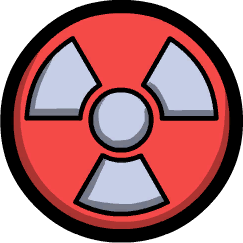 |
This article has not been revised for the current version (U51-600112). It was last updated for U47-562984. It may contain inaccuracies. |
Carbon Skimmer filters Carbon Dioxide from the air, and traps it in Polluted Water. It requires a power connection, and clean Water to be pumped in.
The temperature of the output Polluted Water is the combined one of the input materials.
Unlike Algae Terrariums, Carbon Skimmers do NOT produce oxygen.
Usage[ | ]
Carbon Skimmers serve as an alternative to slicksters in Carbon Dioxide recycling. While slicksters provide fuel, skimmers direct Polluted Water to agricultural applications.
Carbon Skimmers are useful when placed in an areas high in Carbon Dioxide to remove it, which prevents your colony from being overwhelmed by it, as well as lowering air pressure. Since carbon dioxide is a dense gas and sinks, the skimmer is most effective when placed at the bottom of the colony.
Tips[ | ]
- Since the Carbon Skimmer outputs exactly the same volume of liquid as it takes in, it can be built in a closed loop with a Water Sieve. This saves 240 W of power to run a Liquid Pump once the loop is given an initial quantity of water to work with.
- One Sieve can serve up to 5 Skimmers.
- If you have a Lavatory + Water Sieve loop, you can route the filtered overflow water through a Carbon Skimmer & dispose of it in a Hydroponic Farm tile with Thimble Reed or other crop, this also disposes of all germs from the lavatory-water (since Water Sieves don't remove any germs at all).
 A Carbon Skimmer can be used to convert CO2 to O2 at slightly less than a 10:1 ratio. Skimmer->Water Sieve->Sublimation Station->Deodorizer will produce Oxygen 120g of oxygen for every 1500g of carbon skimmed. It will also consume 1.15kg of filtration medium, 740W of power, and whatever material is used to generate that power. 150g of clay will also be produced. This is an expensive way of producing oxygen but can supplement bases with limited water and large reservoirs of CO2. A petroleum generator produces enough energy to skim and convert its own emissions with less than half of its output.
A Carbon Skimmer can be used to convert CO2 to O2 at slightly less than a 10:1 ratio. Skimmer->Water Sieve->Sublimation Station->Deodorizer will produce Oxygen 120g of oxygen for every 1500g of carbon skimmed. It will also consume 1.15kg of filtration medium, 740W of power, and whatever material is used to generate that power. 150g of clay will also be produced. This is an expensive way of producing oxygen but can supplement bases with limited water and large reservoirs of CO2. A petroleum generator produces enough energy to skim and convert its own emissions with less than half of its output.















